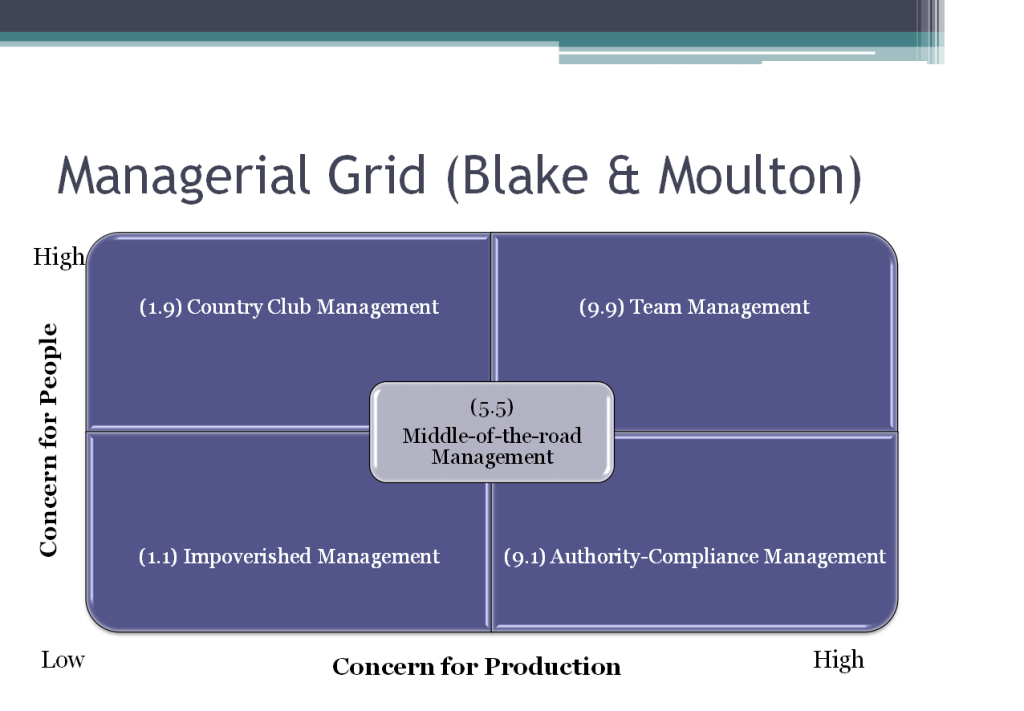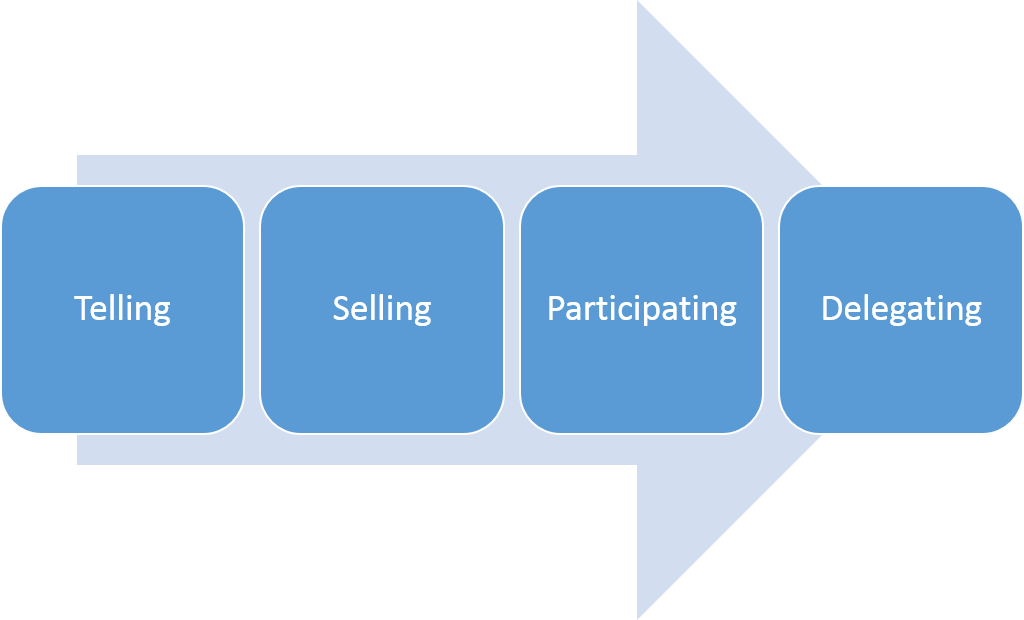Updated May 31, 2023

Leadership Theories and Leadership Concepts
“Leadership concepts is not a title. It’s behavior. Live it.”– Robin Sharma
It as a concept has fascinated numerous thinkers and management gurus over the years. Leadership theories and attempts to explain and define leadership concepts have abounded. From the early leadership theories of Trait and Behavior to the later ones of Transformational and Distributed Leadership concepts, almost every aspect has been touched upon in management literature. While earlier thinkers believed that it was based on certain inborn characteristics in people and that leaders were born, not made, later leadership theories focused on the environment and situations that generated leadership behavior.
Theodore Roosevelt famously commented on the difference between a leader and a boss, saying, “The leader leads, and the boss drives”.
This summarizes why leaders are admired and followed willingly while mere bosses are not. Leadership has nothing to do with position and authority and everything to do with inspirational behavior and actions.
Here we have Mentioned Some Early Leadership Theories
- Trait theory, originally propounded by Charles Bird and later by Stogdill
- Behavioral theory, based on research studies conducted by the Ohio State University and the University of Michigan
- Management or Leadership Concepts Grid theory, founded by Robert R. Blake and Jane S. Moulton
- Situational or Contingency theory, developed by Fred Fiedler
- Path-goal theory, proposed by Robert House
- Participation Theory, by Victor Vroom and Phillip Yetton
So let’s start from the beginning of all leadership theories.
The Trait Theory
Charles Bird, in the Trait Theory, lists some traits that could lead to successful leadership concepts, that include:
- Good personality
- Intellectual ability
- Initiative
- Maturity
- Self-confidence
- Flexibility
- Willingness to accept responsibility
- Fairness
Stogdill further classified the following traits and skills:
- Adaptability
- Decision
- Ambition
- Persistence
- Energy
- Dominance
- Tolerance to stress
- Diplomacy
- Intelligence
- Social skills
- Conceptual skills
While some specified traits like energy, self-esteem, and cognitive abilities are linked to leadership behavior, the Trait theory is faulty. Critics argue that it relies too much on inborn traits and measures traits only after a person has become a leader. While some traits may work in some situations, they may not work in others. It is also difficult to draw a common list of personal traits in every leader.
Yet, despite these limitations, the concept of individual leadership traits or potential works to this day. You tend to admire people like Barrack Obama and Ratan Tata for their charisma and contribution to their work area.
Behavioral Theory
As opposed to traits, this theory that resulted from the studies of Ohio State University and the University of Michigan focuses on the activities of leaders to identify behavioral patterns that affect employee satisfaction and performance. Per this theory, a leader’s behavior gives followers greater satisfaction, so they recognize him as a good leader.
The Leadership Behaviour Description Questionnaire (LBDQ) assessed leadership concepts and styles from the responses of the subordinates or followers. The Leader Opinion Questionnaire (LOQ) assessed the leader’s perception of his/her style.
The following two mutually independent behaviors were identified:
- Initiating Structure Behavior (IS), i.e., the leader allocates tasks and sets up formal communication channels
- Consideration Behavior (C), i.e., shows concern for followers and creates a supportive work climate
A leader may be a high IS, C, or both.
Rensis Likert conducted the University of Michigan studies to define two types of leadership behavior clearly:
- Task-centered Leader Behaviour
- Employee-centered Leader Behaviour
This means that your boss or leader is focused on achieving organizational goals and tasks and pushes you for the same or that he/she is concerned only about you and other teammates and seeks to establish supportive relationships at the workplace.
The Managerial Grid
Concern for people and concern for production form the two basic patterns of behavior, as per this theory propounded by Blake and Moulton.
Per the grid, 1.1 is impoverished management lacking task and relationship considerations. On the other end of the grid is 9.9, which is the ideal behavior and results in team management.
Let’s say you have a boss whom you gel with and who gives you free rein to do things as you wish. You love your boss, as do others on your team, but management frequently tells him to pull up his socks. And at the end of the first quarter, you discover you are way behind your targets. Your boss is soon shown the door for repeated underperformance. Your boss is the typical Country Club manager.
Situational Theory or Fiedler’s Contingency Theory
This theory moves away from the leader’s personality to the relationship with the group or followers and emphasizes that the situation or contingency decides the best style of leadership concepts.
In a nutshell, it says:
- Leadership style varies according to a situation
- No single style of leading works in all situations
- It is dependent on
- Subordinate considerations
- Supervisor considerations
- Task considerations
So your boss, otherwise quite pleasant and easygoing, suddenly turns into a monster wielding a stick when a critical project must be completed. She repeatedly supervises you, communicates the urgency of your task, and is behind your back most of the time. You wonder what the matter with her is. Nothing. She is simply switching her style to authoritarian as per the contingency or situation at hand.
Least preferred co-worker (LPC) scale: Fiedler fixes the leader’s leadership style by the LPC scale, an instrument for measuring an individual’s leadership orientation. The LPC scale asks a leader to describe the person they have worked least well with. Individuals rating their least preferred coworker more favorably on these scales are more relationship motivated, and those who rate the coworker negatively are task-oriented. Therefore, the scale measures the leader’s orientation and motivation.
Path-Goal Theory
An individual will do something only if it leads to attaining his/her goals and if he/she appreciates the payoff of doing the work. This is the crux of this theory. A leader facilitates the achievement of individual goals while aligning these with the organization’s objectives. So leadership behavior is motivational. It coaches and supports followers.
- A leader’s work is to guide followers in attaining their goals and integrating individual goals to group/organizational objectives
- Influence the subordinate’s perception of the benefits of achieving organizational/group goals
Robert House identified four leadership concepts styles:
- A directive, where the leader tells subordinates what to do, gives guidance
- Supportive, where he/she shows concern toward subordinates
- Participative, where subordinates are consulted in decision-making or asked to make a decision themselves
- Achievement-oriented, where the leader helps subordinates in setting and accomplishing goals
The leader’s style is flexible, and he/she may use any or all of the above styles depending on the situation.
The theory was later revised to emphasize that the leader also makes up for deficiencies in subordinates and the work environment.
For example, let’s say your team has to submit a market survey report by a scheduled date, and there is a lack of sufficient data. Also, two team members are absent just before the submission date. Your leader will strive to attain the required information from all possible sources, provide guidance and inputs, and actively help you and other team members complete the report on time. In short, he/she has helped you achieve your goals.
Situational Leadership Concepts Model
Paul Hersey and Ken Blanchard developed this model. This model focuses on followers and their progress from low competence and commitment individuals to high competence and commitment.
Salient Features:
- This model focuses on followers.
- It suggests that leaders should adopt different approaches according to the type of followers.
- It proposes a ‘continuum’ of adaptation of leadership concepts in response to followers’ development.
Followers are classified into the following categories:
- Those who have low Competence and low Confidence, Commitment
- Those who have low Competence but high Confidence and commitment
- Those who have high Competence but low Confidence and commitment
- Those who have high Competence and high Confidence, Commitment
Leaders must adapt their leadership concepts approach according to follower willingness and ability.
The continuum progresses from:
To illustrate with an example, in a group of people, two workers have low confidence and are generally unwilling to do any work. With these two people, the leader will specify firmly what needs to be done (Telling). One worker is very enthusiastic and willing to do his best, but he is a newcomer and doesn’t know much about the job. Here the leader will use the selling approach (explaining the task and methods and remaining available for guidance). Another person may be very competent but may lack confidence and willingness. Here the leader will encourage input and appreciate efforts (Participating). With the remaining two competent and committed workers, the delegating approach will be used (giving responsibility for planning and execution of the task).
Participation Theory
Here again, the situational model of leadership behavior is stressed. Vroom and Yetton defined the following styles of leadership concepts for making decisions.
So the process moves from autocratic to group decision-making, where each team member decides the final course of action.
Participative leadership concepts work best when multiple opinions, like marketing a new product or deciding on a new training program, are required. The style works in creative set-ups like advertising or software design. However, this style proves cumbersome when decisions need to be taken fast.
The early leadership theories are relevant to this date and shape many leadership development programs that focus on imbibing leadership skills in participants.
Over the years, the focus of leadership research has shifted from the leader to the impact on followers and the organization.
I will touch upon these leadership theories briefly.
- Transactional Leadership concepts
The exchange between leaders and followers or members characterizes this theory. People usually want to increase pleasurable experiences and minimize unpleasant ones. Leaders use rewards and punishment to get their members to carry out tasks.
- Leader-member Exchange
The leader must maintain his or her leadership position by working with associates, supporters, and the “inner circle” of followers. Here the leader regards followers differently depending on the support they offer him/her.
- Transformational Leadership
This is one of the most popular leadership theories, introduced in the ‘70s. James MacGregor Burns introduced the concept of transformational leadership and later expanded it to Bernard M. Bass.
Transformational Leadership is a style that inspires positive change in followers. Followers are inspired and enthused to achieve extraordinary outcomes. Here, the leader’s personality has to be truly inspiring and should command respect and admiration from followers. The leader is a role model others look up to.
Salient features:
- This leadership style works best in introducing and implementing change in the organization
- The model relies a lot on the personal charisma and integrity of the leader
- The leader develops the vision and sells the vision to followers, who are then positively enthused to internalize the vision
- This leader leads from the front
- This style inspires followers to transform themselves and discover their leadership potential
One of the criticisms of this theory is that it relies too much on the leader’s charisma. Also, such leaders perform to the hilt in introducing and implementing change, but when things need to remain as they are, they find themselves out of place.
Action-centered Leadership model
John Adair proposed the Action-Centred Leadership model. As per this model, the leader must focus on three overlapping areas:
- Task completion
- Team or group unity
- Meeting individual needs
Leadership Participation Inventory or Five Leadership Concepts Practices Model
James Kouze and Barry Posner developed the leadership concepts and traits necessary to inspire followers.
The following traits were listed:
- Being a Role Model
- Providing Inspiration
- Facing Adversity
- Empowering others
- Generating enthusiasm
Emerging concepts of leadership theories include servant leadership, authentic leadership, ethical leadership, neo-charismatic leadership, shared or distributed leadership, and entrepreneurial leadership.
“A genuine leader is not a searcher for consensus but a molder of consensus.” – Martin Luther King Jr.
Times have changed since the first theory of leadership was formed. Today, economic turbulence, global uncertainties, and changing corporate realities have necessitated the emergence of new leadership paradigms. Today’s leader must be a molder of opinion, a creator of opportunities, a change driver, a diversity manager, and a conflict management expert. Not an easy task.
As Napolean says, “A leader is a dealer in hope.”
Recommended Articles
Here is some link that will help you get more detail about Leadership Theories, concepts, and behavior. So some links here are given below that will help you get more detail.



